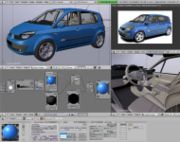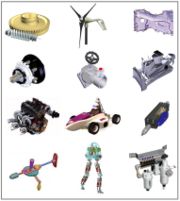Free and open-source computer-aided design
|
One of the core components necessary for open collaborative design to truly take flight is an advanced free and open-source computer-aided design (CAD) program to allow anyone to easily generate new designs or customise existing ones. The program should include a special browser to enable finding and importing open-source components and machines from the 'universal commons' as well as analytical tools and 'physics engine' The availability of user-friendly open source CAD software will be essential to allow the widest number of people to engage in this creative activity, which should help create a more diverse ecosystem of objects, machines and solutions. There is no reason, with thoughtful implementation, why this software shouldn't be intuitive enough for children to use easily. It could explain mechanical and engineering principles along the way if the user wished, and also be a place to store detailed contextual development notes, wiki style, to help others understand the workings and decisions made. The virtual nature of the designs mean that far-flung people via the internet can easily work together on the same design, either working individually on various sub-assemblies of the whole or collaborating directly on the same part. The restrictions of having to finding people local to yourself with similar interests and desires becomes much less of an issue.
With many people contributing to open design projects, as happens currently with software, a universal commons will emerge made up of vast libraries of designs for everything from components and sub-assemblies through to complete artefacts, machines and complex systems, available for anyone to download and incorporate into their own designs, or help evolve as part of a wider project.
As in software, it would be useful for components and assemblies to be as 're-usable' as possible in the sense of being able to be incorporated in many different machine designs. To aid this it should be possible to specify the vital dynamic functions of a component or assembly in the CAD software, so that it can easily be modified in shape and scale so it can be incorporated into a new design while ensuring it still works correctly. This will enable a huge reduction in duplication of effort and allow people to focus their efforts on creating new machines of increasing complexity and building on the work of others. One interesting side-effect of open collaboration is that it tends to lead to highly modular design. FireFox and Linux are examples of this. Modularity also leads to a high degree of reusability; someone designing a new piece of hardware or software can pick-and-mix parts of existing projects. This works well in software, but may have to be abstracted somewhat to work in physical systems where dimensions are obviously important to fit with other components. |
 [print version]
[print version]  [update]
[update]  [site map]
[site map]

